Beppu
last update: July 23, 2024
Beppu (別府) is an enchanting hot spring town located in Ōita Prefecture, on the island of Kyushu in southern Japan. With a population of about 120,000 inhabitants, Beppu is renowned for being one of the country's top hot spring destinations. Beppu's hot springs are famous not only for their healing and relaxing properties but also as a scenic attraction due to the unique colors and steam that characterize some of its geothermal springs known as the "Hells of Beppu." Welcome to Beppu, where the charm of hot springs blends with the beauty of local culture and landscapes.
What to See and Do in Beppu
The main attraction in Beppu is its hot spring baths, known as onsen in Japanese, available both publicly and within hotels and ryokan. The onsen are scattered throughout the city, traditionally divided into eight different hot spring districts collectively known as
Beppu Hatto. In a particular area of the city,
Beppu Jigoku, the waters emerging from the underground are so hot and rich in minerals that they create breathtaking landscapes. The city is also surrounded by mountains. From Mount Tsurumi, you can enjoy a fascinating panorama, and on Mount Takasaki, there is a nature reserve home to 1,500 monkeys.
Beppu Hatto, the Hot Springs of Beppu
Beppu is one of the largest hot spring cities in Japan. Water flows from the underground at a rate of 130,000 tons per day, making this area second in the world for the amount of hot spring water, second only to Yellowstone National Park in the USA. The main hot spring area of the city, simply known as
Beppu Onsen, is the easiest to reach as it is located around Beppu Station. If you want to explore less touristy areas, seven other hot springs await you in the city of Beppu.
Beppu Onsen
This hot spring is located near Beppu Station, along with some red-light district establishments. The most famous and charming public bath in the area, with traditional architecture and an old-style atmosphere inside, is
Takegawara. Entry to the hot spring baths costs 300¥, but the most popular attraction is the sand baths (1,500¥), where you are buried up to your neck in warm sand.
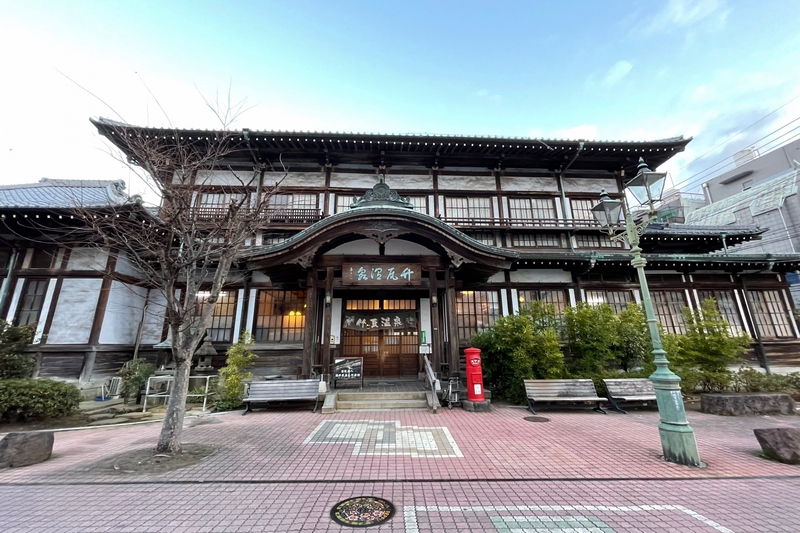 Takegawara Onsen
Takegawara Onsen
Other Hot Spring Areas
The other hot spring areas scattered around the city are:
- Hamawaki Onsen. Legend has it that these were the first hot springs to be discovered, near the current Higashi-Beppu Station. An area with old-style bathhouses along streets that hosted a now-defunct red-light district during the Meiji period.
- Horita Onsen. A hot spring in a semi-rural area at the foot of Mount Tsurumi. A perfect place to refresh after a mountain hike. It can be reached by bus from Beppu Station.
- Kamegawa Onsen. Located on the coast, between Beppudaigaku and Kamegawa stations. This area is famous for its beach sand bath (Beppu Beach Sand Bath), near Beppudaigaku Station. At the time of writing, the facility is closed for renovation, and it is unclear when it will reopen.
- Kankaiji Onsen. These hot springs are in a scenic area, about 150 meters above sea level. From its hotels, you can often enjoy a view of the city. It can be reached by bus from Beppu Station.
- Kannawa Onsen. This is the area of the Hells of Beppu, with hot springs so hot that they create surreal landscapes. There are also some public baths and hotels in the area. It can be reached by bus from Beppu Station.
- Shibaseki Onsen. A hot spring area in a semi-rural setting, along a mountain road that follows a river. Two of the eight Hells of Beppu are located at this hot spring. It can be reached by bus from Beppu Station.
- Myoban Onsen. The farthest hot spring from Beppu Station. It is in a quiet and peaceful area, surrounded by the woods of the surrounding hills. It can be reached by bus from Beppu Station.
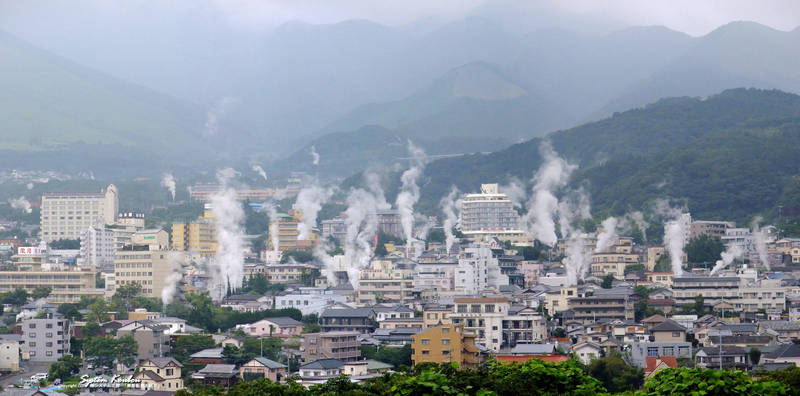 The city of Beppu with its thermal steam rising everywhere
The city of Beppu with its thermal steam rising everywhere
Beppu Jigoku
- Entrance Fee: 450¥ for each of the eight springs
- Opening Hours: 8:00-17:00
- Closed Days: None
- Additional Information: By purchasing a cumulative ticket for 2,200¥, you can enter the seven main springs. Only Yama Jigoku (entrance 500¥) is excluded
In the areas of Kannawa Onsen and Shibaseki Onsen are some of the city's most famous attractions, known as
Beppu Jigoku. The term "Beppu (no) Jigoku" translates literally as "The Hells of Beppu." This expression refers to hot springs with waters emerging from the underground at temperatures too high for bathing, between 50 and 99.5°C. In total, there are seven jigoku, seven hells, seven hot springs around which unique scenic setups have been created, each different from the other. Each spring is fenced off and requires an entrance fee. Five of these springs are located in the
Kannawa Onsen area. The recommended order for visiting them is
Umi Jigoku,
Oniishibozu Jigoku,
Kamado Jigoku,
Oniyama Jigoku, and
Shiraike Jigoku, all within walking distance of each other. Two other springs are in the
Shibaseki Onsen area, namely
Chinoike Jigoku (one of the most beautiful) and
Tatsumaki Jigoku, the only hell that is not a water pond but a geyser.
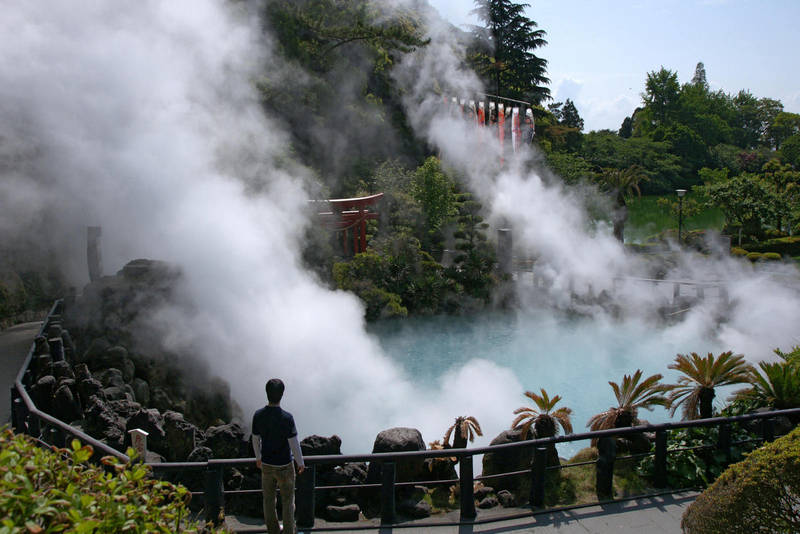
Umi Jigoku
Its name literally means "sea hell," as the water takes on a turquoise color like the best tropical beaches. In Beppu's case, however, a steaming sea. One of the most beautiful.
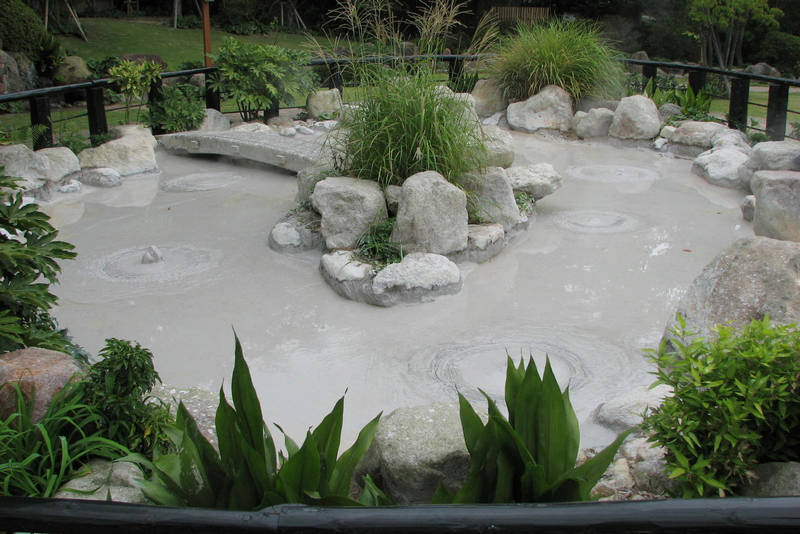
Oniishibozu Jigoku
A pool of boiling gray mud, constantly producing mud bubbles. The name of this spring literally means "monk's shaved head" due to the resemblance to the mud bubbles.
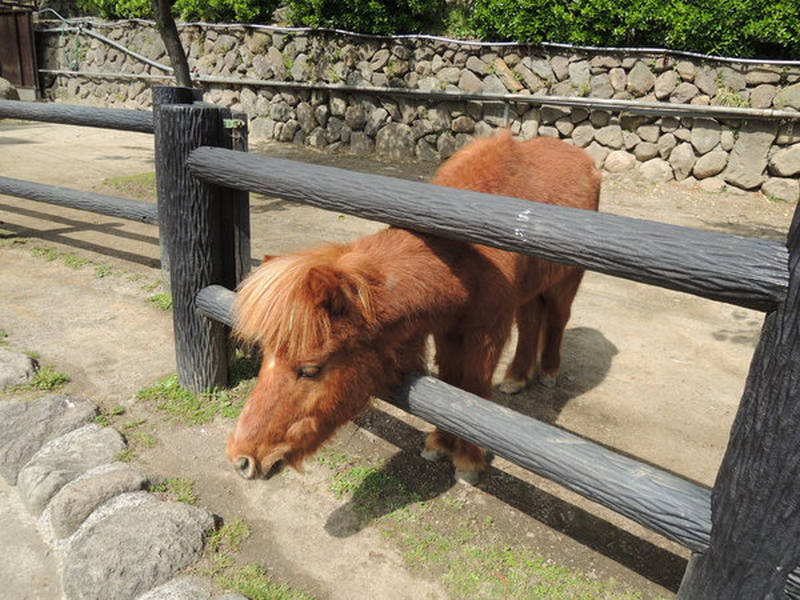
Yama Jigoku
(Entrance 500¥, opening hours 9-17)
This place also calls itself "jigoku," or hell, but it is not part of the seven famous hells of Beppu. It is located near the Oniishibozu Jigoku spring. Inside, there is a mini-zoo with rabbits, guinea pigs, turtles, and other animals.
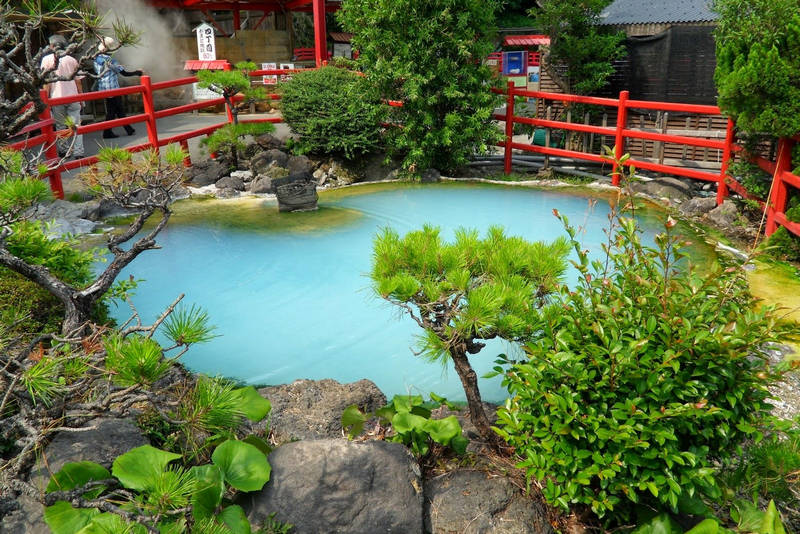
Kamado Jigoku
Also known as the "cooking pot hell," this spring offers a variety of ponds of different colors and temperatures, as well as some fumaroles from which vapors come out.

Oniyama Jigoku
Also known as "crocodile hell," as inside there is a pond of water heated by the spring, home to many crocodiles and other animals, kept in very confined spaces.
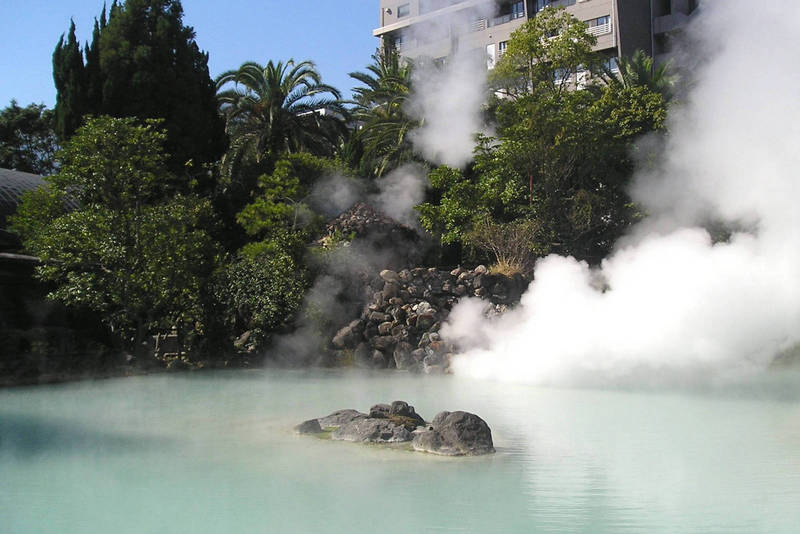
Shiraike Jigoku
Also known as the "white pond hell" because of the color of the water, which is milky white due to the high content of calcium in the water. There is also a small aquarium with some fish.
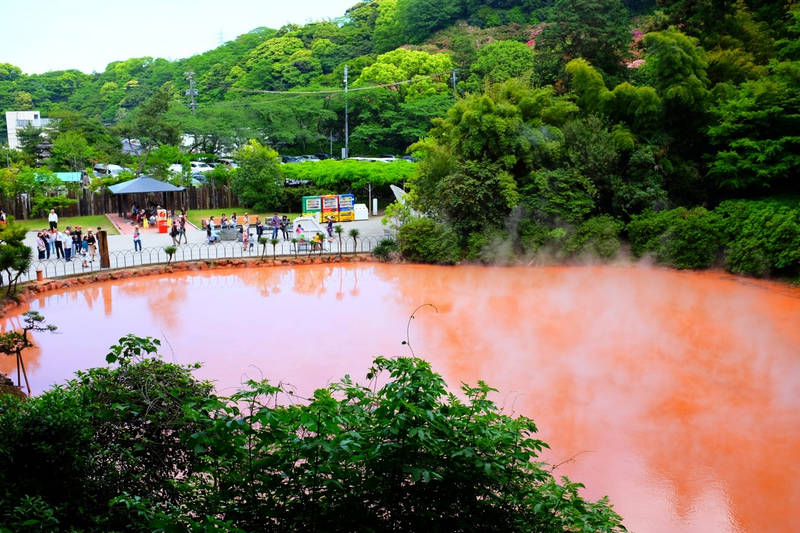
Chinoike Jigoku
In the Shibaseki Onsen area, this spring is known as the "blood pond hell" due to its color, which is bright red. It is the most visually striking of all.
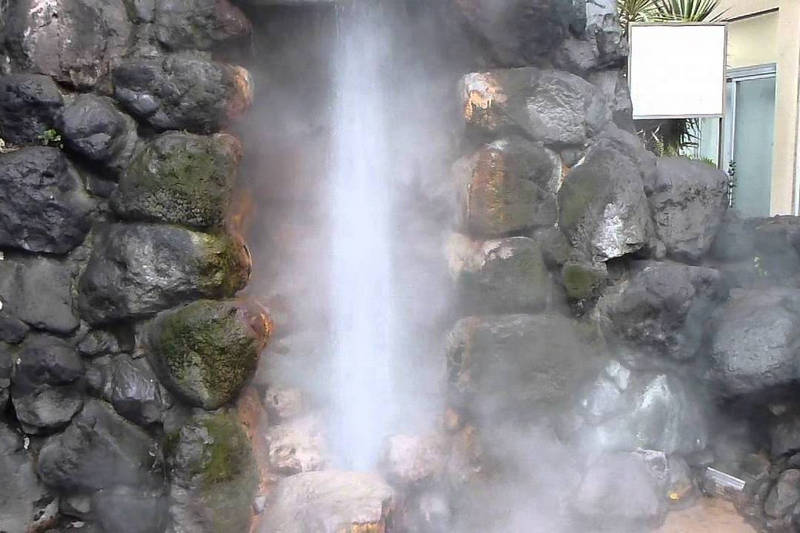
Tatsumaki Jigoku
The "tornado hell," the only one of Beppu's seven hells that is not a water pond but a geyser. The geyser is activated at regular intervals (about every 30-40 minutes) and can reach a height of 20 meters.
Mount Takasaki
Mount Takasaki, in Japanese
Takasakiyama, is a small forest-covered mountain located just a few kilometers south of Beppu, towards the city of Oita. You can reach the base of the mountain by bus from the center of Beppu. The nearest stop is called "Takasakiyama," connected to Beppu Station by the AS60 and AS61 lines.
Takasakiyama Natural Zoo
(Admission 520¥, opening hours 9-17)
At the base of this mountain and near the aforementioned bus stop, you'll find the entrance and ticket office of a natural reserve inhabited by about 1500 monkeys, belonging to the species known as Japanese macaques (the same species found in the more famous Jigokudani park). Once inside the reserve, you can encounter the monkeys almost everywhere, as they live freely within the park without any restrictions. By walking up the mountain for about 5 minutes or taking a small monorail (110¥), you reach a sort of playground where the monkeys gather and spend their time, while park staff explain various things and occasionally feed the animals.
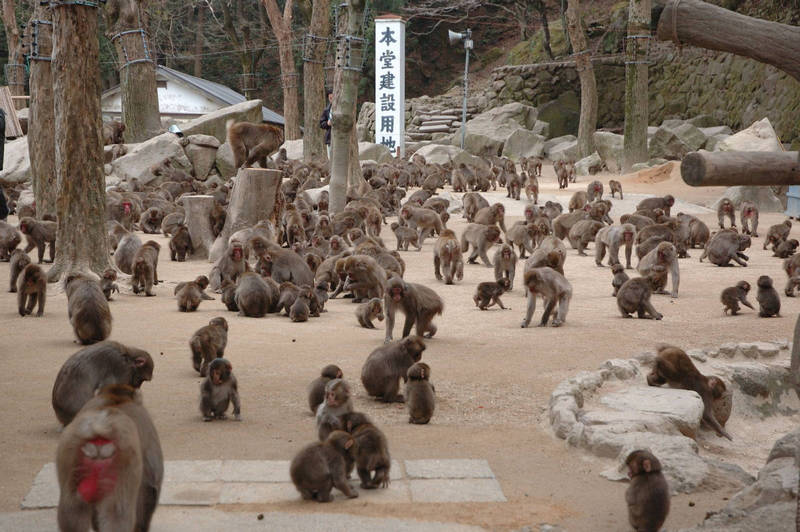 The monkey park at the base of Mount Takasaki
The monkey park at the base of Mount Takasaki
Oita Marine Palace Aquarium
(Admission 2600¥, opening hours 9-17)
This aquarium, also known as Umitamago (literally "sea egg"), is located by the sea right at the base of Mount Takasaki and can be reached from the Monkey Park's visitor center by crossing a large pedestrian bridge over a highway. Among the various marine species in the aquarium are otters, seals, and penguins. One of the most popular attractions is the dolphin acrobatic shows. Overall, it's a well-maintained aquarium, recommended if you are a fan of such places. Avoid it during summer weekends due to local tourist overcrowding.
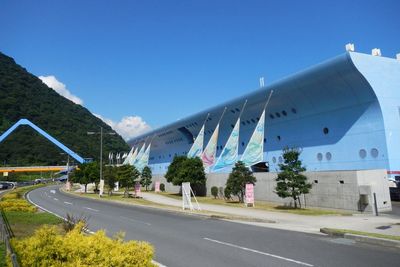
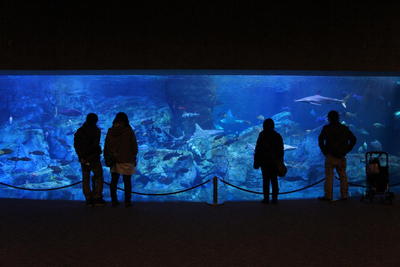 Oita Marine Palace Aquarium
Oita Marine Palace Aquarium
Mount Tsurumi
Mount Tsurumi is a 1375-meter-high mountain rising behind the city of Beppu, to the west. You can reach almost the top of the mountain by taking a cable car (
Beppu Ropeway) or by walking along a trail that takes about 2 hours starting from the base station of the cable car. Once you reach the final station of the cable car, either by walking or taking the cable car, there are several viewpoints within a short walking distance. You can see the entire city of Beppu, the sea, and the surrounding mountains. Walking for another 15 minutes will bring you to the highest peak. For hiking enthusiasts, there are many trails leading to various smaller peaks around. For those interested in longer hikes, check out
this article, which suggests a route to reach the top of Mount Tsurumi on foot in about 4 hours directly from Beppu Station.
Beppu Ropeway
(1200¥ one way, 1800¥ round trip, opening hours 9-17)
This cable car takes you almost to the top of Mount Tsurumi. Departures every 20-30 minutes. The base station of the cable car is located a bit outside the city but is connected to Beppu Station in about 20 minutes by the city bus line 36. About 2000 cherry trees color the area around the base station of this cable car in pink each spring during cherry blossom season.
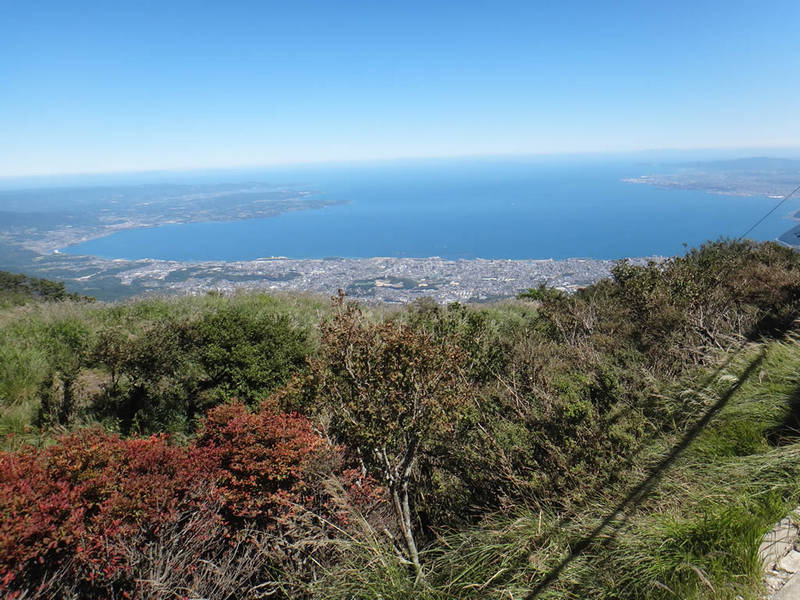 The city of Beppu and the sea seen from Mount Tsurumi
The city of Beppu and the sea seen from Mount Tsurumi
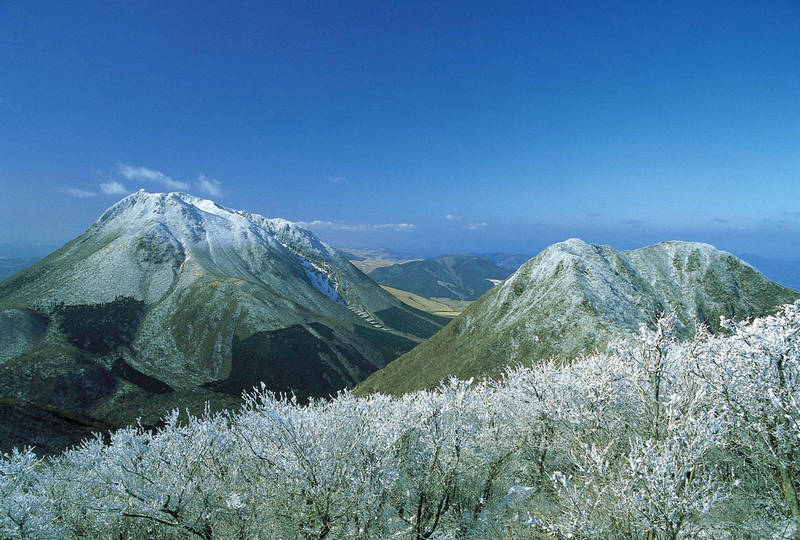 View of the surrounding mountains from Mount Tsurumi during winter
View of the surrounding mountains from Mount Tsurumi during winter
Scenic Spots in Beppu
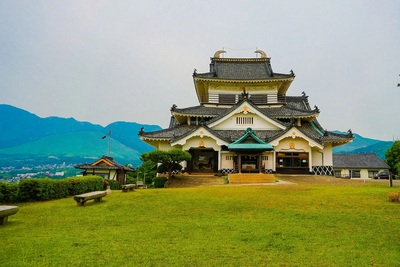
Kifune Castle
(Admission 300¥, opening hours 8-17)
A small but charming Japanese feudal castle, often overlooked by visitors, stands a few minutes' walk from Kannawa Onsen and its famous hells. The current structure is a 1957 reconstruction and is located on a hill offering a picturesque panoramic view of the city and the sea. Additionally, unlike other Japanese feudal castles, there is a distinctive religious atmosphere here. The legend says that the guardian of this fortress is a white snake, closely associated with the deity Benzaiten. It is believed that touching this snake brings good luck, health, and wealth. Surprisingly, a white snake is indeed kept inside the castle, and under the staff's supervision, you can actually touch this legendary creature. On the top floor, a small altar holds commemorative vases containing the deceased predecessors of the current snake.
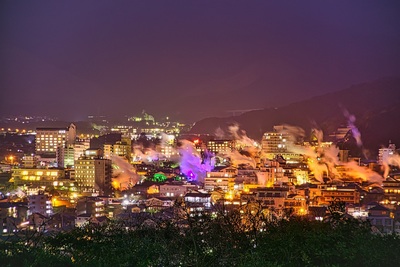
Yukemuri Observatory
The Yukemuri Observatory (just a parking area with benches) is a famous observation spot in Beppu because it offers a view of the steam rising from all over the city, along with the majestic Mount Tsurumi and nearby mountains in the background. The view from this spot is very popular among couples, especially in the evening when the white steam rising from the streets shines, reflecting the warm orange light emitted by the city's houses.
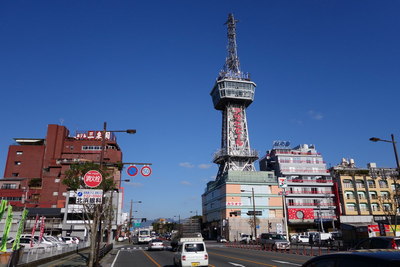
Beppu Tower
(Admission 800¥, opening hours 9:30-21:30)
This 100-meter-high telecommunications tower was inaugurated in 1957, designed by Tachu Naito, a famous architect of the time who also designed Tokyo Tower and several other towers in Japan. At the base of the tower is a five-story building housing other attractions, including a small art museum (admission 500¥). The Kitahama Terrace (200¥) on the rooftop of this building allows visitors to observe the tower up close, and at night, a series of colorful and illuminated tables are set up, creating a fantastic atmosphere. The main attraction is the 360-degree panoramic observatory located about 55 meters above ground (16th and 17th floors), offering views of the city and the sea. On the top floor in the evening, light effects are projected onto the floor, creating a romantic, subdued atmosphere.
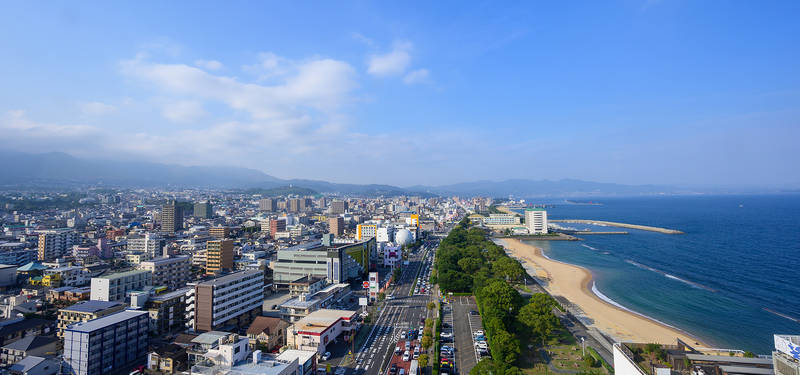 View from Beppu Tower
View from Beppu Tower
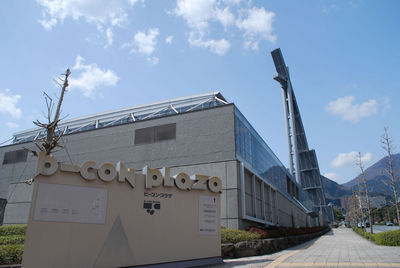
Beppu City Global Tower
(Admission 300¥, opening hours 9-21, until 19 Dec-Feb)
Located near the B-Con Plaza convention center, the Global Tower rises majestically to a height of 125 meters, offering visitors an unforgettable experience with its panoramic observation deck. The architectural design of the tower is the brainchild of Arata Isozaki, a renowned architect from Oita Prefecture and a globally acclaimed figure. The structure features a futuristic design with two side pillars supporting a massive central arch-shaped structure. The observation deck at the top of the tower is itself an architectural masterpiece, with two floors connected by a suspended staircase leading to the upper level. This upper level is completely glassed on all sides, including the roof, providing breathtaking views from every angle.
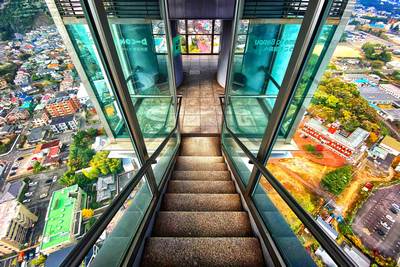
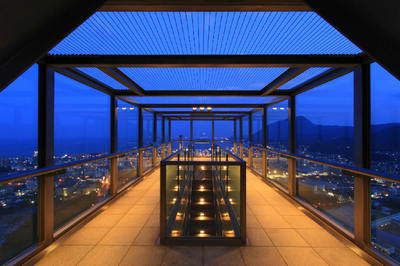 The panoramic observatory of Beppu Global Tower
The panoramic observatory of Beppu Global Tower
Other Points of Interest in Beppu
Beppu Rakutenchi
(Admission 1300¥, opening hours 9-17)
An old amusement park opened in 1929, with a very vintage atmosphere. The location is quite unique, as the park is situated among the mountains, surrounded by forest, and offers beautiful panoramic views from several points.
To reach it, you need to take some curious little trains (included in the price) that will take you up the hill where the park is located. The departure station of these trains is about 1.5 km west of Beppu Station.
Among the various attractions, there is a two-story Ferris wheel, roller coasters, a section where you can observe various animals up close (goats, donkeys, monkeys, peacocks, etc.), and the duck races, where you can place bets on real duck races. It is especially recommended if you have children with you. You can find a detailed review of the park on the excellent site Themeparkreview.com.
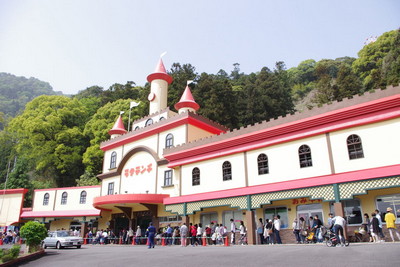
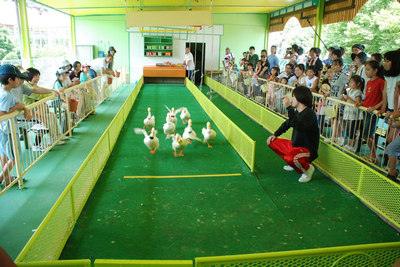 The departure station for the train to the park, and the duck races
The departure station for the train to the park, and the duck races
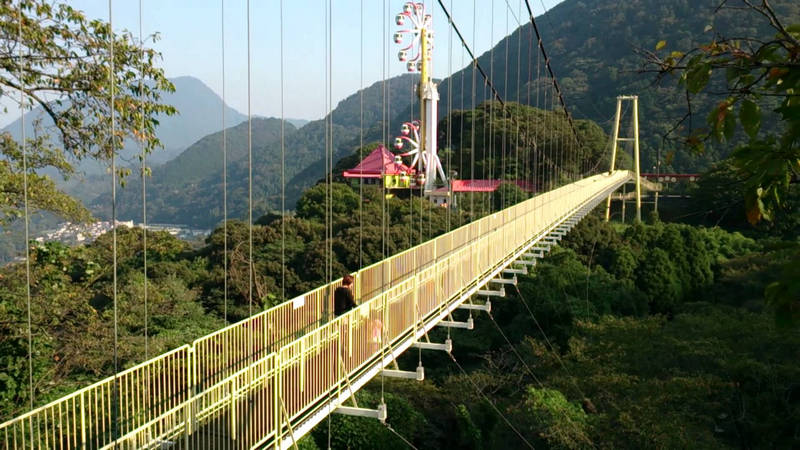 The beautiful location of Rakutenchi Park, with the two-story Ferris wheel in the background
The beautiful location of Rakutenchi Park, with the two-story Ferris wheel in the background
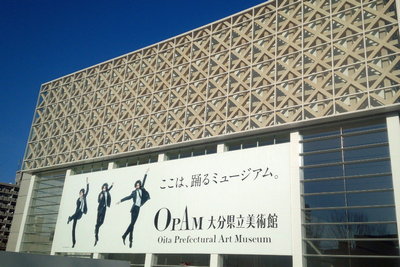
Oita Prefectural Art Museum
(Admission 300¥, opening hours 10-19, until 20 Sat-Sun)
This art museum (OPAM) was inaugurated in 2015 and is housed in an interesting building designed by the starchitect Shigeru Ban, which is interesting in itself.
The permanent collection is not of the highest level and mainly includes works by local artists, particularly Tanomura Chikuden, Fukuda Heihachiro, and Takayama Tasuo.
You can check the schedule of temporary exhibitions hosted in this museum (separate admission) at this link.
Events in Beppu
- Beppu Hatto Onsen Festival. Held every year in April, this festival celebrates the city's hot springs with various events, including free entry to many onsen.
- Beppu Fireworks Festival. Held in the last week of July or first week of August, this festival features a spectacular fireworks display over Beppu Bay.
- Beppu Oita Marathon. Held every year in February, this marathon attracts runners from all over Japan and abroad. The race takes place between the cities of Beppu and Ōita.
Where to Stay in Beppu
Business Hotels near Beppu Station
If you are looking for an economical hotel with all standard services, we recommend the
Hotel Beppu Station or the
Hotel Seawave Beppu. Both hotels are located in front of the west exit of the station. The interiors of both establishments might seem a bit outdated with old-fashioned decor, but this is part of the city's charm (there aren't many new and modern buildings in Beppu). All rooms have private bathrooms, air conditioning, refrigerators, and kettles. Both hotels also offer decent public baths with thermal water, massage services, and a restaurant where you can have a buffet breakfast at a very low price (800-1000¥).
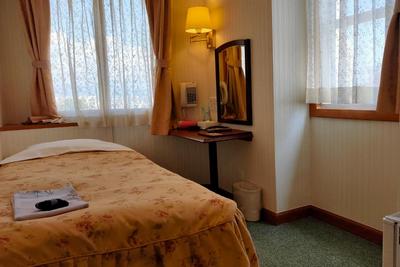 Price Range: single 5,000-6,000¥, double 7,000-9,000¥.
Price Range: single 5,000-6,000¥, double 7,000-9,000¥.
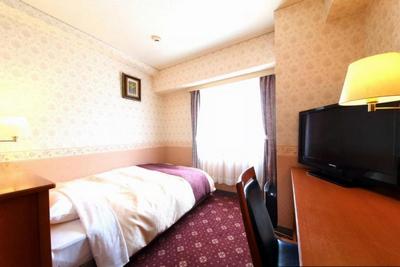 Price Range: single 5,000-6,000¥, double 7,000-9,000¥.
Price Range: single 5,000-6,000¥, double 7,000-9,000¥.
Traditional Ryokan
As with any respectable ryokan in Beppu, there are also public thermal baths and smaller private baths available for booking.
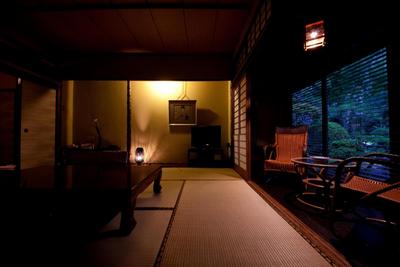 Located just 2 minutes from Beppu station. Beautiful and spacious rooms, with a view of the inner garden. In the in-house restaurant, you can try traditional Japanese breakfast in the morning and the exquisite kaiseki cuisine and pufferfish (fugu) for dinner.
Price Range: double 22,000-30,000¥.
Located just 2 minutes from Beppu station. Beautiful and spacious rooms, with a view of the inner garden. In the in-house restaurant, you can try traditional Japanese breakfast in the morning and the exquisite kaiseki cuisine and pufferfish (fugu) for dinner.
Price Range: double 22,000-30,000¥.
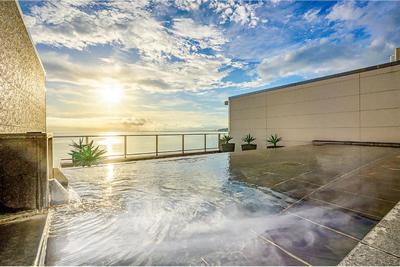 Although not a traditional ryokan, this place is as magical as one. A modern building facing the sea, with Japanese-style rooms with tatami flooring and futon beds, just like in ryokan. Inside, there are many different thermal baths, including a splendid open-air onsen on the seventh floor with a sea view. The in-house buffet restaurant specializes in delicacies based on Kyushu regional fish.
Price Range: single 5,000-5,000¥, double 7,000-9,000¥.
Although not a traditional ryokan, this place is as magical as one. A modern building facing the sea, with Japanese-style rooms with tatami flooring and futon beds, just like in ryokan. Inside, there are many different thermal baths, including a splendid open-air onsen on the seventh floor with a sea view. The in-house buffet restaurant specializes in delicacies based on Kyushu regional fish.
Price Range: single 5,000-5,000¥, double 7,000-9,000¥.
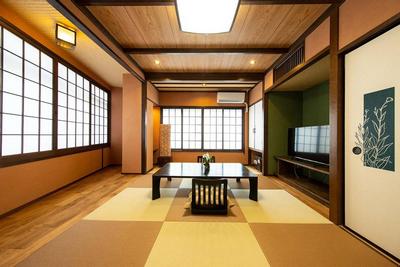 A traditional ryokan on a street a short walk from Oniyama Hell, the one full of crocodiles. The structure has both outdoor and indoor thermal baths with very hot and mineral-rich water, and small private baths available for booking. It is also possible to use the sand baths, a unique experience where you are covered with hot sand. Breakfast and dinner, in kaiseki style, are served directly in the dining room of your room. Dinner also includes some dishes cooked with thermal steam, a local specialty called jigokumushi.
Price Range: double 25,000-35,000¥.
A traditional ryokan on a street a short walk from Oniyama Hell, the one full of crocodiles. The structure has both outdoor and indoor thermal baths with very hot and mineral-rich water, and small private baths available for booking. It is also possible to use the sand baths, a unique experience where you are covered with hot sand. Breakfast and dinner, in kaiseki style, are served directly in the dining room of your room. Dinner also includes some dishes cooked with thermal steam, a local specialty called jigokumushi.
Price Range: double 25,000-35,000¥.
Low-Cost accommodation
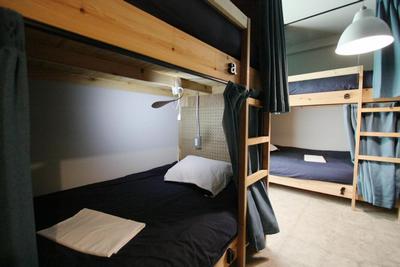 Price Range: dormitory bed 2,000-3,000¥, private double rooms 5,000-6,000¥.
Price Range: dormitory bed 2,000-3,000¥, private double rooms 5,000-6,000¥.
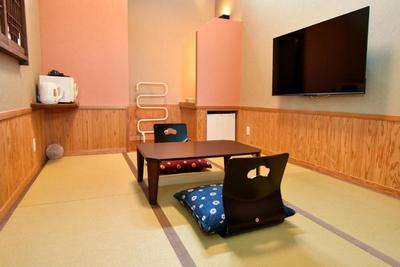 Price Range: single room 7,000-8,000¥, double room 9,000-11,000¥.
Price Range: single room 7,000-8,000¥, double room 9,000-11,000¥.
Eating and Drinking in Beppu
The typical cuisine of Beppu that is popular among tourists is
hell-steamed cuisine, in Japanese
jigoku-mushi ryori (地獄蒸し料理). Compared to traditional steaming, in Beppu, steam from its high-temperature hot springs is used. With this method, they cook everything in Beppu, meat, fish, vegetables, and even pizza. It is a method of cooking suitable for everyone because it is simple and healthy. No other ingredients are added during cooking, and it is said that the steam of Beppu, naturally rich in minerals, enhances the true flavors of the food.
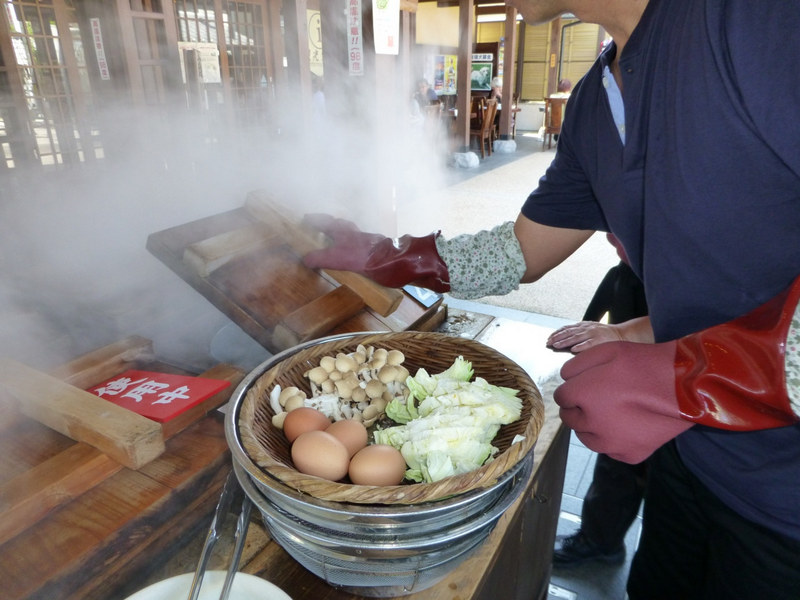 Hell-steamed cuisine
Hell-steamed cuisine
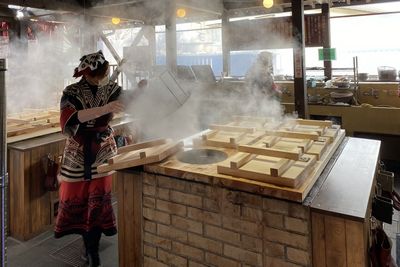
Jigoku Mushi Kobo
(opening hours 10-19, closed the third Friday of the month)
This place is located in the Kannawa area, near some of the hells. It can be considered a sort of public kitchen. Here, you can cook on your own using special steamers, utilizing the thermal steam from the city’s underground. You can bring your own ingredients or buy them on-site at reasonable prices. To use the steamer, you pay 400¥/600¥ for the first 15 minutes, then an additional 200¥/400¥ for every additional 10 minutes. The two prices refer to the small and large steamers available. The center has both indoor and outdoor tables and provides tea and various utensils needed for eating and cooking. As it is not a full-service restaurant, the staff are volunteers, so you will need to clean your table and return the utensils once you are done eating. Besides being a great place to eat, this place is also excellent for relaxation, as there are two free foot onsens: one is a typical hot spring foot bath found often in Japan, and the other consists of unusual steam baths.
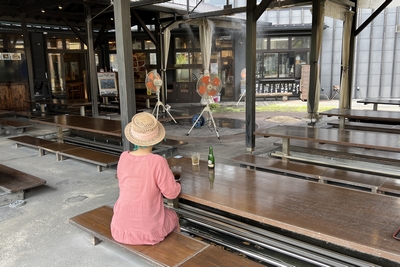
Chinetsu Kanko Labo Enma
(opening hours 10-22)
If you prefer to try hell-steamed cuisine in a place with more restaurant-like service, we recommend this spot, also not far from the hells in the Kannawa area. The menu includes more unique dishes such as steamed pizza, as well as other common Japanese dishes not steamed, like soba and udon. Under all the tables in this restaurant are small hot spring pools where you can soak your feet while you eat.
How to Get to Beppu
By Train
From Tokyo, Nagoya, Osaka, Kyoto, Hiroshima
Beppu is not directly served by shinkansen high-speed train lines. The nearest shinkansen station is
Kokura station, about 140 km from Beppu and served by the
Sanyo shinkansen. You can reach Kokura Station from all the cities served by shinkansen further north, for example from Tokyo (almost 5 hours, about 23,000¥), Osaka (135 minutes, about 15,000¥), or Hiroshima (50 minutes, about 8,000¥).
Once you arrive at Kokura by shinkansen, to reach Beppu you will need to change trains and take limited-express trains called
Sonic (70 minutes, 4860¥ to Beppu).
From Fukuoka
Fukuoka is the starting point for the above-mentioned limited-express trains
Sonic, which make a stop at Kokura Station. From Fukuoka, the entire trip to Beppu takes 2 hours and costs 6470¥.
You can almost halve the cost of this train by purchasing a set of two tickets for 6600¥. The two tickets can be used either individually for a round trip or together (one per person for a one-way trip).
By Bus
There are no direct bus connections between Tokyo and Beppu due to the long distance. However, reaching Beppu by bus is an excellent alternative if you are coming from other cities in the region such as
Fukuoka,
Kumamoto, or
Kagoshima.
This website, available in English and created through a collaboration between all major bus companies operating in the region, allows you to check routes, schedules, and make reservations easily. The foreign-friendly bus company
Willer Express also operates some routes to Beppu from both the Kansai region and the Hiroshima area.
By Plane
The nearest airport to Beppu is
Oita Airport (OIT), located about 40 km away. Both major carriers JAL and ANA as well as some low-cost carriers operate from this airport.
Peach and
JetStar Japan, in particular, connect Oita Airport with Tokyo, sometimes with fares as low as 10,000¥.
By Ferry
Beppu Port is connected by ferry to the cities of
Osaka and
Yawatahama (in the
Shikoku region).
From Osaka
The
Ferry SunFlower company operates one connection per day between Beppu Port and a port in Osaka Bay (
Osaka Nanko Port Cosmo Ferry Terminal). Ferries depart in the evening and arrive early in the morning at the destination, for a total of about 12 hours of navigation. Prices start from around 13,280¥ for the "Standard" fare, which includes a bed in shared rooms for the night. There are also various types of private rooms with extra costs ranging from 2000¥ to 15¥ more than the Standard fare, depending on the comfort of the room. More details on all available accommodations and other information can be found on the
official website of the company. Booking online offers a five percent discount on fares.
From Yawatahama
If you want to reach Beppu from the Shikoku region, the ferry is an excellent option. Yawatahama Port can be reached in about an hour and a half by train from Matsuyama, one of the main cities on the island. The
Uwajima Unyu Ferry company operates six connections per day between Beppu Port and Yawatahama and vice versa. The sailing time is about 3 hours, and a one-way ticket in economy class costs 4,200¥. It is also possible to book online, but it is usually not necessary; there is always availability, and you can conveniently purchase your ticket at the port before departure.
Map of Beppu, Oita
Guided tours, activities and other things to do
If you are planning a trip to Japan and you want to do something more than just visiting famous places and monuments, we suggest you to use
Rakuten Travel Experiences.
How to use Rakuten Travel Experiences
Rakuten Travel is a very useful website to
enrich your travel experience, especially if you are going solo or it's your first time in Japan.
Because of the language barrier (and more), in Japan it is very difficult to interact with the locals and to get off the tourist track.
Thanks to Rakuten Travel you can find a lot of interesting and sometimes unique
guided tours and activities all over Japan (and not only in Japan), that you would otherwise never be able to enjoy.
But there's more: on Rakuten Travel you can also
buy tickets for several famous attractions, events, transportation and other useful services for tourists. Last but not least, you can
reserve a table in hundreds of restaurants.
Some examples
Take a look at Rakuten Travel Experiences
You may also be interested in













 Located just 2 minutes from Beppu station. Beautiful and spacious rooms, with a view of the inner garden. In the in-house restaurant, you can try traditional Japanese breakfast in the morning and the exquisite kaiseki cuisine and pufferfish (fugu) for dinner.
Price Range: double 22,000-30,000¥.
Located just 2 minutes from Beppu station. Beautiful and spacious rooms, with a view of the inner garden. In the in-house restaurant, you can try traditional Japanese breakfast in the morning and the exquisite kaiseki cuisine and pufferfish (fugu) for dinner.
Price Range: double 22,000-30,000¥.
 Although not a traditional ryokan, this place is as magical as one. A modern building facing the sea, with Japanese-style rooms with tatami flooring and futon beds, just like in ryokan. Inside, there are many different thermal baths, including a splendid open-air onsen on the seventh floor with a sea view. The in-house buffet restaurant specializes in delicacies based on Kyushu regional fish.
Price Range: single 5,000-5,000¥, double 7,000-9,000¥.
Although not a traditional ryokan, this place is as magical as one. A modern building facing the sea, with Japanese-style rooms with tatami flooring and futon beds, just like in ryokan. Inside, there are many different thermal baths, including a splendid open-air onsen on the seventh floor with a sea view. The in-house buffet restaurant specializes in delicacies based on Kyushu regional fish.
Price Range: single 5,000-5,000¥, double 7,000-9,000¥.
 A traditional ryokan on a street a short walk from Oniyama Hell, the one full of crocodiles. The structure has both outdoor and indoor thermal baths with very hot and mineral-rich water, and small private baths available for booking. It is also possible to use the sand baths, a unique experience where you are covered with hot sand. Breakfast and dinner, in kaiseki style, are served directly in the dining room of your room. Dinner also includes some dishes cooked with thermal steam, a local specialty called jigokumushi.
Price Range: double 25,000-35,000¥.
A traditional ryokan on a street a short walk from Oniyama Hell, the one full of crocodiles. The structure has both outdoor and indoor thermal baths with very hot and mineral-rich water, and small private baths available for booking. It is also possible to use the sand baths, a unique experience where you are covered with hot sand. Breakfast and dinner, in kaiseki style, are served directly in the dining room of your room. Dinner also includes some dishes cooked with thermal steam, a local specialty called jigokumushi.
Price Range: double 25,000-35,000¥.
 Price Range: dormitory bed 2,000-3,000¥, private double rooms 5,000-6,000¥.
Price Range: dormitory bed 2,000-3,000¥, private double rooms 5,000-6,000¥.
 Price Range: single room 7,000-8,000¥, double room 9,000-11,000¥.
Price Range: single room 7,000-8,000¥, double room 9,000-11,000¥.

